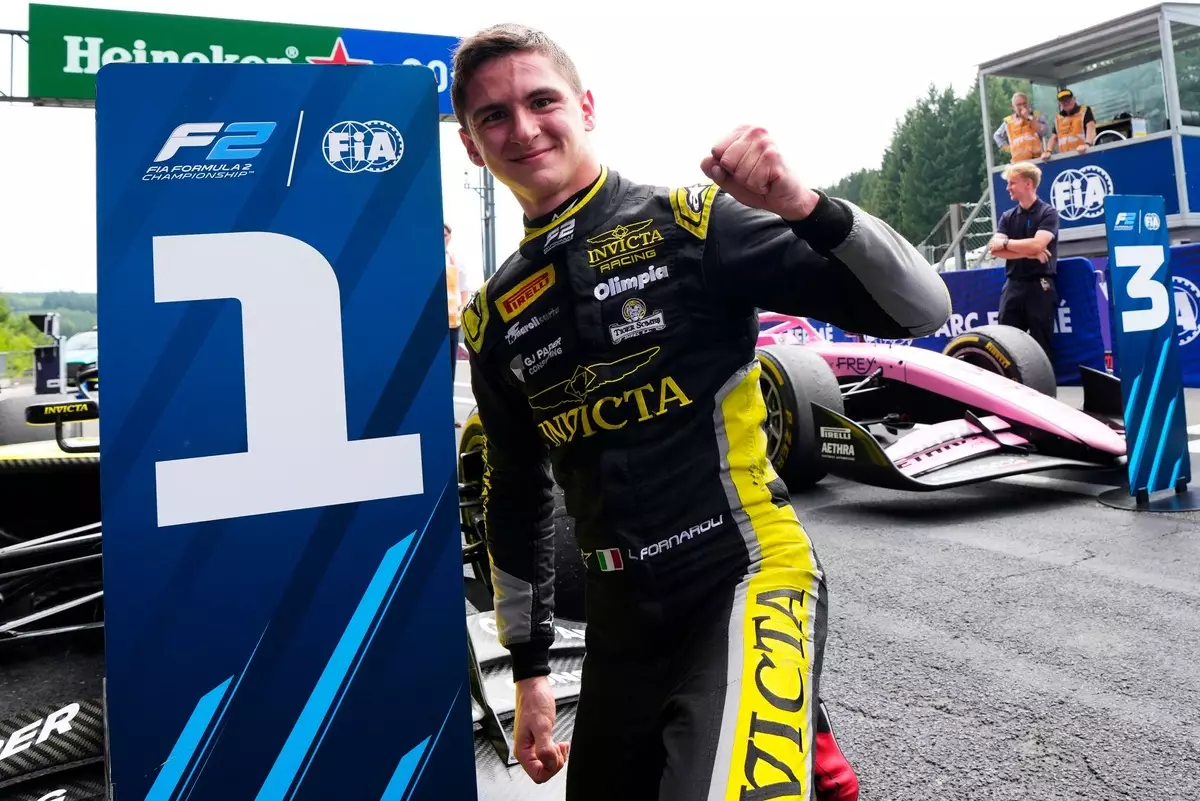In the high-stakes world of motorsport, success often hinges on visibility, marketing, and associations with powerful F1 academies. Yet, amid this landscape, a promising talent—Leonardo Fornaroli—steps forward, defying conventional pathways and exposing the limitations of traditional driver development systems. His remarkable trajectory as the current leader in Formula 2, without the backing of a major F1 team, illuminates a critical gap in how potential is recognized and nurtured in this fiercely competitive arena. It’s a stark reminder that raw talent and consistent performance can often outshine flashy backing, begging the question: Are we missing out on the next great driver because of industry biases?
Fornaroli’s ascent is particularly compelling because it disrupts the typical narrative. Most drivers in the upper echelons of junior categories achieve prominence through early affiliation with F1 academies, sizable sponsorship, or high-profile victories. However, Fornaroli’s path exemplifies that technical skill, mental resilience, and consistency are equally, if not more, vital. His victory tally in F2, especially considering his circumstance—initially a F3 champion with no race wins in nearly two years—serves as a testament to his development. It underscores that talent can quietly simmer beneath the industry’s glare and still emerge as a genuine contender.
This unheralded journey invites a deeper critique of the industry’s over-reliance on hype and associations. The tendency to prioritize part-time drivers with F1 backing over individuals like Fornaroli suggests a fundamental misunderstanding: that visibility and commercial appeal are the only metrics of driver potential. In reality, a driver’s ability to execute under pressure, maintain composure, and deliver consistent data—qualities exemplified by Fornaroli—are the ingredients that truly determine a driver’s value. His story signals a need for teams and scouts to broaden their horizons and consider unorthodox candidates deserving of support and recognition.
Why the F1 Industry Must Pivot to Data-Driven Talent Recognition
Referring to Fornaroli as a “Moneyball” driver isn’t just a catchy metaphor; it’s a critique of the outdated talent identification model that has dominated motorsport for decades. Much like Billy Beane revolutionized baseball by emphasizing analytics over traditional scouting, teams should adopt a more nuanced, data-centric approach to driver evaluation. Consistency, technical feedback, adaptability—these qualities translate into tangible data points that can predict future F1 success, yet they are often undervalued amid the flashier metrics like race wins or social media buzz.
Fornaroli’s case exemplifies why this approach is not only logical but essential. The young Italian driver, despite lacking extensive wins in recent competitions, exemplifies reliability and racecraft—traits that elite F1 teams prize above all. His capacity to execute race strategies flawlessly, manage tire wear, and remain unflappable in high-pressure moments demonstrates a driver’s true potential to develop and refine an F1 car. These qualities are core to a team’s long-term success and are often overlooked when scouts place excessive weight on immediate results or marketing power.
Furthermore, Fornaroli’s lack of a high-profile personality or extensive media presence should not diminish his perceived value. The industry’s fixation on flamboyance and charisma tends to overshadow qualities that directly impact car performance and team dynamics. Such superficial evaluation risks overlooking drivers who might be less outspoken but are invaluable in the trenches—drivers capable of providing precise technical feedback and stable performance over a demanding season. If F1 teams could embrace a more analytical, less biased talent scouting system, drivers like Fornaroli would likely receive avenues to showcase their potential, revolutionizing the sport’s approach.
Decoding the Industry’s Short-Sightedness and Embracing Hidden Gems
Robinson’s candid admiration for Fornaroli’s composure and racecraft underscores a broader issue: the sport’s persistent undervaluation of consistency and mental resilience. Robinson highlights Fornaroli’s ability to stay calm, put in steady lap after lap, and deliver results in challenging conditions. These are qualities that transcend short-term racing luck; they embody mental toughness and technical maturity. Yet, traditional pathways often reward aggressive, high-risk drivers who may deliver flashier results but are less reliable in the long run.
By not recognizing Fornaroli’s brilliance, F1 risks underestimating the importance of these traits. A “Moneyball” approach would identify drivers who excel in data-driven assessments, like meticulous feedback, adaptation to car nuances, and consistent lap times, over the traditional metrics that favor fame-driven early success. Such drivers can be instrumental in developing race cars, leading to performance breakthroughs that depend on subtle technical exchanges between driver and machine.
The industry’s obsession with star power and marketability creates a myopic view, impeding the discovery of real talent. Fornaroli, with his understated personality, doesn’t fit the media’s mold of a future F1 star, yet he embodies what teams truly need: stability, consistency, and an unrelenting focus on performance. It is high time the motorsport world reevaluates its talent pipeline, emphasizing measurable skills and mental attributes over superficial qualities. The future champions may be the quiet ones—drivers whose potential is obscured by a lack of recognition but whose performance proves they are ready for the biggest stages.
In identifying and nurturing overlooked talents like Fornaroli, F1 teams have the chance to build more resilient and innovative racing programs—drivers who aren’t just quick but are also finely tuned to develop cars and push boundaries subtly but significantly. This shift towards valuing genuine skill over spectacle could redefine excellence in motorsport, opening doors for countless hidden champions to emerge and reshape the sport’s landscape.


Leave a Reply